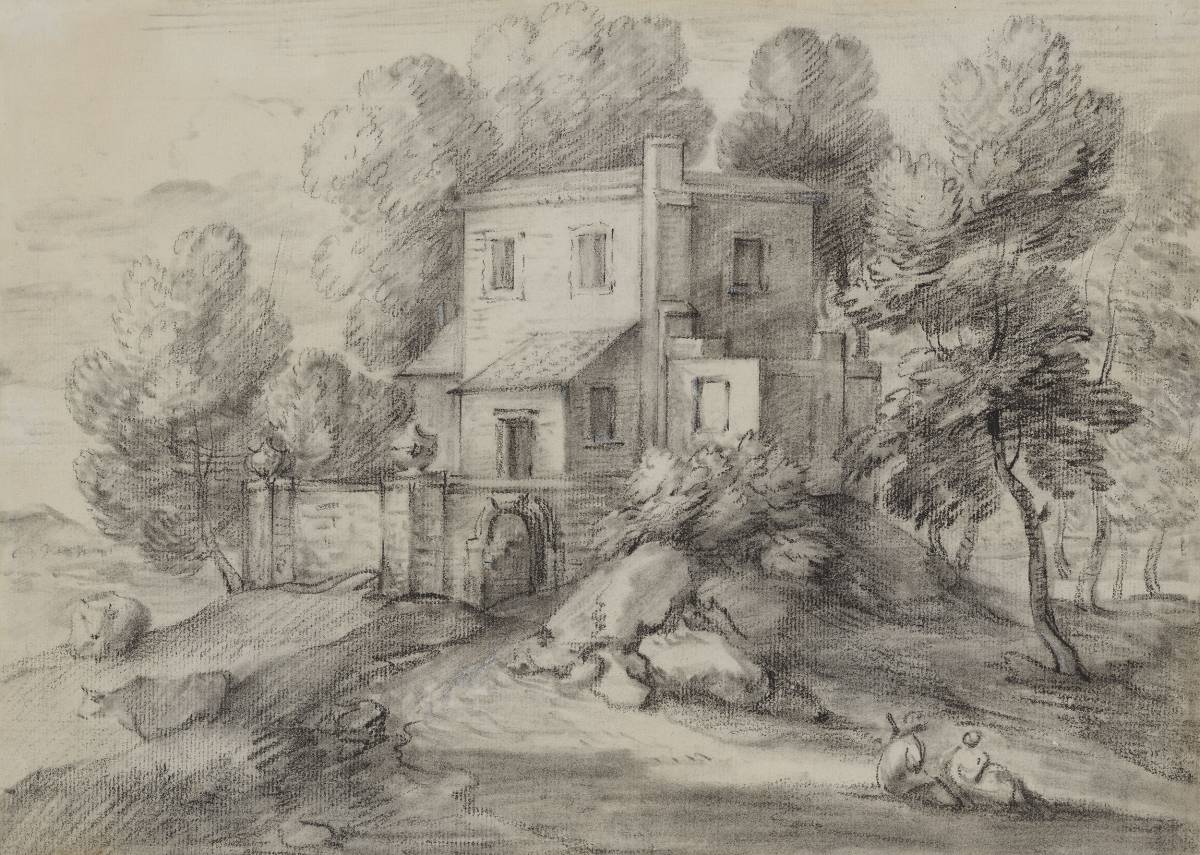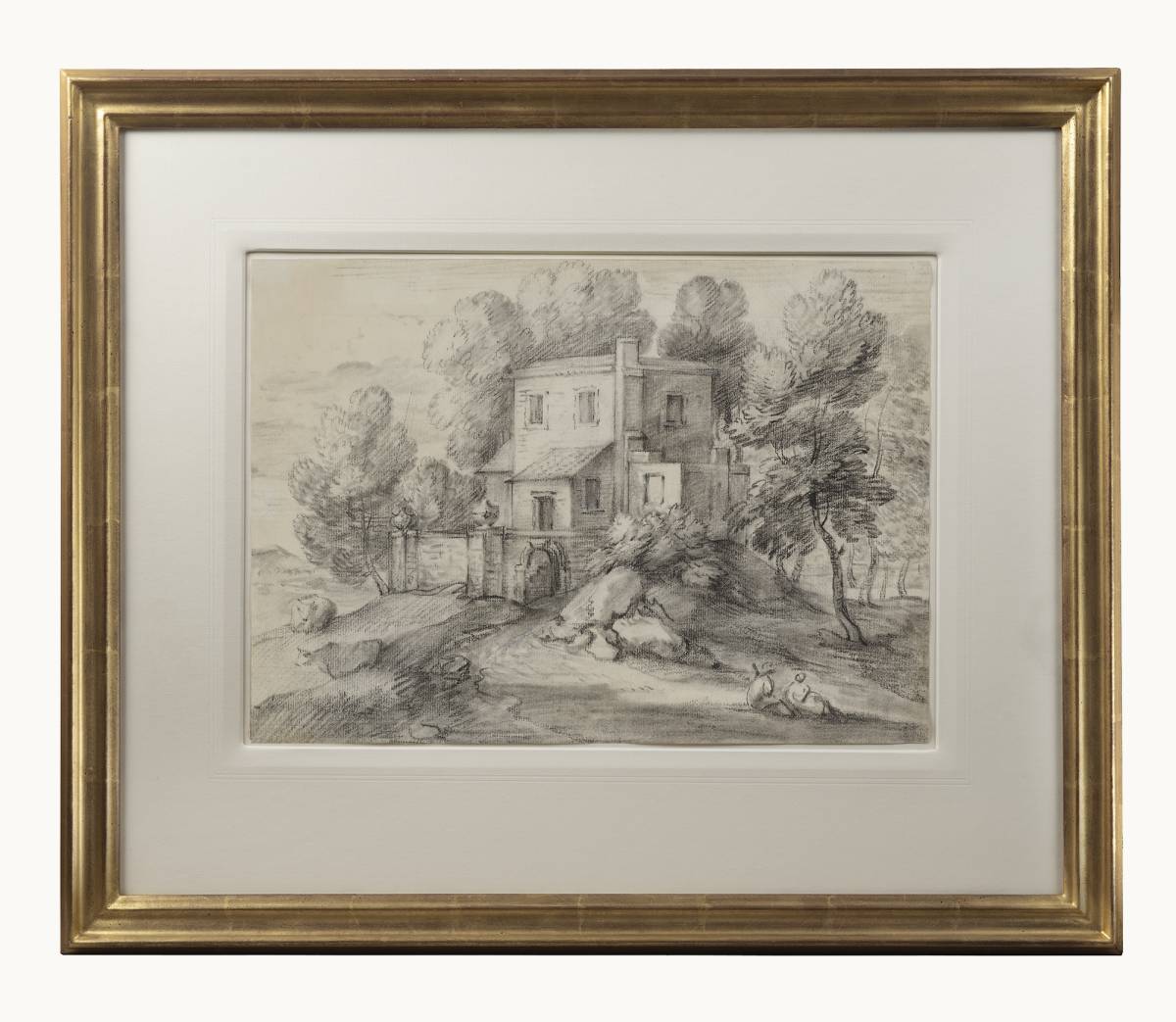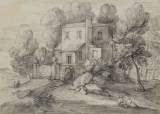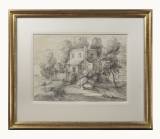In the 1770s Gainsborough began to explore the motif of a rustic villa in a landscape, completing a number of drawings on the theme and at least one, large exhibition painting. This freely worked drawing belongs to this group, which are unusual amongst Gainsborough’s oeuvre for their interest in architecture. Preserved in beautiful condition, this large sheet is rapidly and loosely worked in black chalk and shows Gainsborough’s facility at constructing compositions with a limited range of materials and forms. The present drawing is closely related to another sheet of broadly the same design in the collection of the Cecil Higgins Art Gallery, Bedford. The existence of two almost identical sheets by Gainsborough problematises certain of our assumptions about his graphic work and raises the question of how we read a drawing such as this.
The evidence strongly suggests that Gainsborough did not consider his drawings strictly preparatory for his finished oils, rather he considered them autonomous works of art. In this way, Gainsborough’s mature drawings must be considered as parallel to his finished oils. Gainsborough’s method for making his landscape drawings was rooted in his own imagination. Having devoted much of his early career to the careful observation of nature, assembling a vast archive of natural studies, in his maturity Gainsborough focused on composition and medium, restlessly arranging and re-arranging an exiguous group of landscape motifs, whilst experimenting with different papers, chalks and washes. The resulting drawings form one of the most graphically arresting and beautiful bodies of work completed in the eighteenth century.
The present sheet encapsulates Gainsborough’s complex working method. In the early 1770s Gainsborough became interested in the motif of the rural villa; he made a sequence of drawings of a cubic building, with various geometric accretions. The building, with its flat roof and pronounced chimney stack, seems to have been a vehicle for experimenting with perspective. Vaguely Roman in character, the building may have been derived from the Arcadian landscapes of Gaspard Dughet, which were of particular interest to Gainsborough. Variations on the theme appear in at least two unfinished oils of the early 1770s and the fine, large, varnished drawing now in the collection of the Indianapolis Museum of Art.
In the present composition Gainsborough has set the villa, with its walled garden topped with Italianate urns, in a stand of trees and populated the foreground with a pair of distinctively drawn cows, rocks and a seated couple. Executed in black chalk on laid paper, Gainsborough has used stumping to build, soften and extend the tonal range of the composition. Stumping, the controlled smudging of black chalk, was a technique Gainsborough used with consummate skill, giving a remarkable subtlety of effect to his sheets. Once Gainsborough conceived of a compositional motif – in this case the oddly geometric building – he repeatedly revisited it, sometimes replicating the composition to subtly different effect. In the case of the present drawing, Gainsborough repeated the composition in a sheet now in the Cecil Higgins Art Gallery, Bedford. The Cecil Higgins sheet contains white heightening, which gives a slightly different effect, there also difference throughout in the treatment of foliage, fall of light and the articulation of the various elements. Susan Sloman pointed out that in this way, Gainsborough followed the musical precedent of establishing a theme and then elaborated a series of variations.





